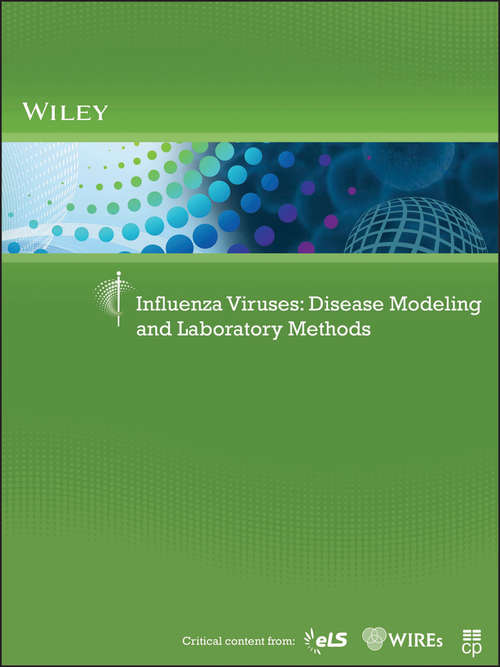Influenza Viruses: Disease Modeling and Laboratory Methods (Life Science Research Fundamentals)
By:
Sign Up Now!
Already a Member? Log In
You must be logged into Bookshare to access this title.
Learn about membership options,
or view our freely available titles.
- Synopsis
- Influenza virus infections are a serious health problem. Each year, about 500 million people are infected by the virus, resulting in about 500,000 deaths worldwide. The occurrence of new influenza subtypes has caused severe pandemics, including the 2009 swine flu (vH1N1). In addition, highly pathogenic viruses, like subtypes H7N7 and H5N1, also called the fowl plague and bird flu, respectively, represent enormous economic threats to livestock farming. This book begins with descriptions of the molecular make-up of influenza viruses, their replication cycles and functions of viral proteins. A history of major influenza pandemics is provided as is a detailed article discussing how viral growth and decay is mathematically modeled to evaluate the biological parameters governing interaction between host and virus. Several laboratory protocols describe how influenza virus is handled and used in animal models to study host-pathogen interactions and test potential new therapies. This e-book — a curated collection from eLS, WIREs, and Current Protocols — offers a fantastic introduction to the field of influenza research for students or interdisciplinary collaborators.
- Copyright:
- 2014
Book Details
- Book Quality:
- Publisher Quality
- ISBN-13:
- 9781118829479
- Related ISBNs:
- 9781118829493
- Publisher:
- Wiley
- Date of Addition:
- 04/16/20
- Copyrighted By:
- John Wiley
- Adult content:
- No
- Language:
- English
- Has Image Descriptions:
- No
- Categories:
- Nonfiction, Science, Medicine
- Submitted By:
- Bookshare Staff
- Usage Restrictions:
- This is a copyrighted book.
